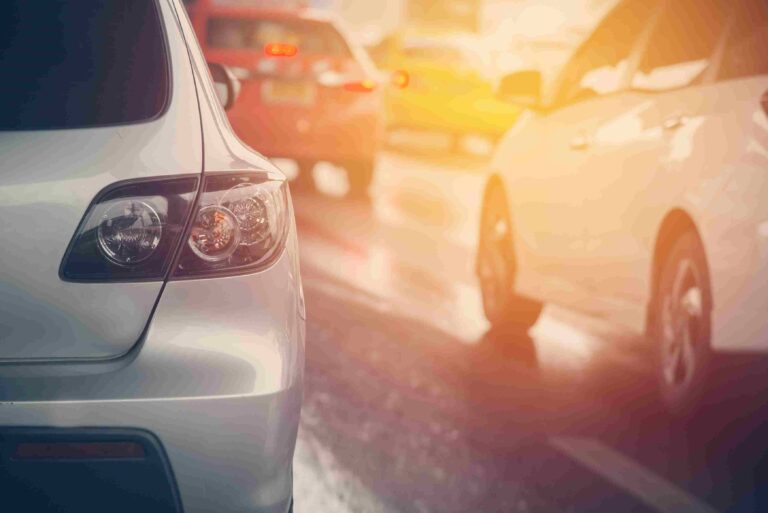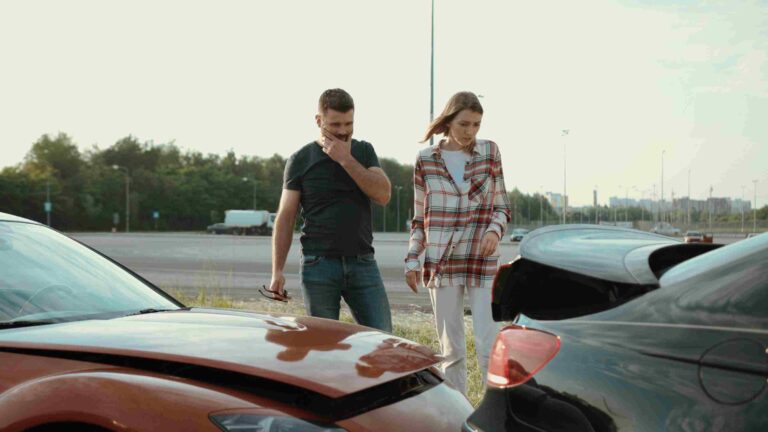The color of your car might be more than just a personal preference. Could it influence your safety on the road? Understanding the various factors contributing to crash risk is crucial, especially for those who have already experienced a car accident.
Our San Antonio auto accident attorney at Patterson Law Group is here to explain the potential link between car color and crash risk, bringing you insights and practical advice.
Car Color and Visibility on the Road
Many individuals believe that vehicle colors play a role in motor vehicle accidents. Although this may seem like an unusual assumption, there are some valid reasons behind it.
How Car Color Affects Visibility
The visibility of a vehicle plays a significant role in road safety. Bright and bold colors are often easier to spot, especially in low-light conditions. Conversely, colors that blend into the background can make a vehicle less noticeable to other drivers, increasing the likelihood of an accident.
The Role of Visibility in Preventing Accidents
High visibility allows other drivers to notice your vehicle more quickly, reducing the chances of collisions. This is particularly important at intersections, during poor weather conditions, or when driving at night.
Common Beliefs and Misconceptions
Many people believe that certain car colors are inherently safer. While visibility certainly plays a role, the relationship between car color and crash risk is more complex. Some misconceptions, such as red cars being more prone to accidents, need to be debunked with factual research.
Studies and Research on Car Color and Crash Risk
Statistics from various insurance companies and traffic safety organizations show that car color does have an impact on crash rates. A study by Monash University Accident Research Centre examined the relationship between vehicle color and crash risk by analyzing police-reported crash data from two Australian states.
Utilizing a stratified induced exposure study design, the research focused on vehicle-to-vehicle and unprotected road user crashes as dependent on vehicle color, with single-vehicle crashes serving as the exposure baseline.
The results of this study revealed a statistically significant link between vehicle color and crash risk. Compared to white vehicles, colors such as black, blue, grey, green, red, and silver were found to have higher crash risks, especially during daylight hours when these colors exhibited up to 10% higher relative crash risks. No color was found to be safer than white, although some colors were statistically similar in terms of crash risk.
Additionally, the study indicated that lower visibility colors were associated with more severe crashes and suggested that environmental factors might influence the relationship between vehicle color and crash risk, warranting further investigation.
How Car Color Affects Crash Risk
There are specific ways that colors play a role in accidents. Understanding these nuances can help drivers make informed decisions when choosing a car color, potentially enhancing safety on the road.
High-Risk Colors
Research indicates that darker colors, such as black, blue, and green, are associated with higher crash rates. These colors can blend into the surroundings, making them less visible to other drivers, especially in low-light conditions. For instance, a black car on a poorly lit street at night might not be easily noticed by other drivers, increasing the risk of an accident. Similarly, a dark blue car driving through a shaded area during the day may not stand out against the backdrop of trees and shadows.
Low-Risk Colors
Conversely, lighter colors like white, yellow, and orange are linked to lower crash rates. Their high visibility makes it easier for other drivers to see them, reducing the likelihood of collisions. A white car, for example, stands out clearly in various lighting conditions, including at night under streetlights or in broad daylight. Yellow and orange cars, often used in emergency vehicles, are chosen for their high visibility, ensuring they are easily seen by other road users.
Factors Influencing the Impact of Car Color
There are some factors that also contribute to whether vehicles of specific colors are more likely to be involved in accidents.
Time of Day and Lighting Conditions
Visibility changes with the time of day. Dark-colored cars are particularly difficult to see at dawn, dusk, or nighttime. During these times, the lack of natural light can cause dark cars to merge with the road or surroundings, making them less noticeable and increasing the chance of a crash. Conversely, in bright daylight, the visibility of lighter-colored cars is enhanced, providing a contrast that makes them easily detectable.
Weather Conditions and Road Environments
Weather plays a significant role in visibility. For instance, foggy or rainy weather can diminish the visibility of dark-colored cars. In these conditions, a dark car may not be seen until it’s too late to react. Snowy environments also pose a challenge, as dark cars can blend into the dim, overcast skies, while light-colored cars can stand out against the white snow. Road environments, such as urban areas with lots of shadows or rural areas with dense foliage, also impact how a car’s color is perceived.
Psychological and Perceptual Factors
Driver behavior and perception also affect crash risk. Some drivers may subconsciously drive more cautiously in high-visibility cars. The color of a car can influence how drivers perceive it; bright, eye-catching colors may prompt other drivers to give more space or react quicker. On the other hand, drivers of dark-colored cars might drive more defensively, aware of their lower visibility. However, this is not always consistent, and overconfidence in a light-colored car’s visibility could lead to complacency.
Understanding these factors can help make a more informed decision when choosing a car color, contributing to safer driving experiences. Regardless of the color of a vehicle, if you are hurt in an accident, you must seek help from a car accident lawyer in San Antonio immediately. A San Antonio auto accident attorney can help you understand your rights and pursue a personal injury claim on your behalf.
Get Help from a Car Accident Lawyer in San Antonio
If you have been involved in a car crash, it is crucial to understand your rights and get the support you need. Our San Antonio auto accident attorney at Patterson Law Group is here to help. Our team has decades of experience helping individuals protect their rights following accidents. We are here to fight for justice on your behalf. Schedule a consultation with our car accident lawyer in San Antonio today.











